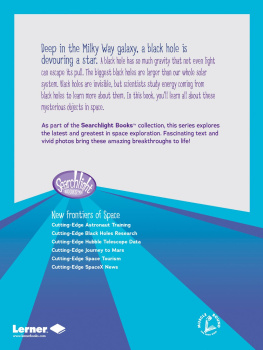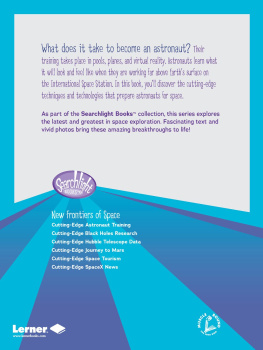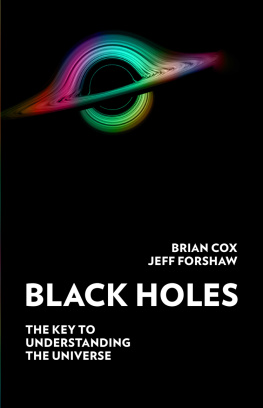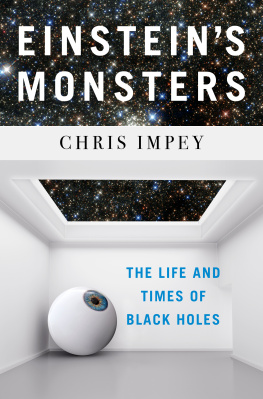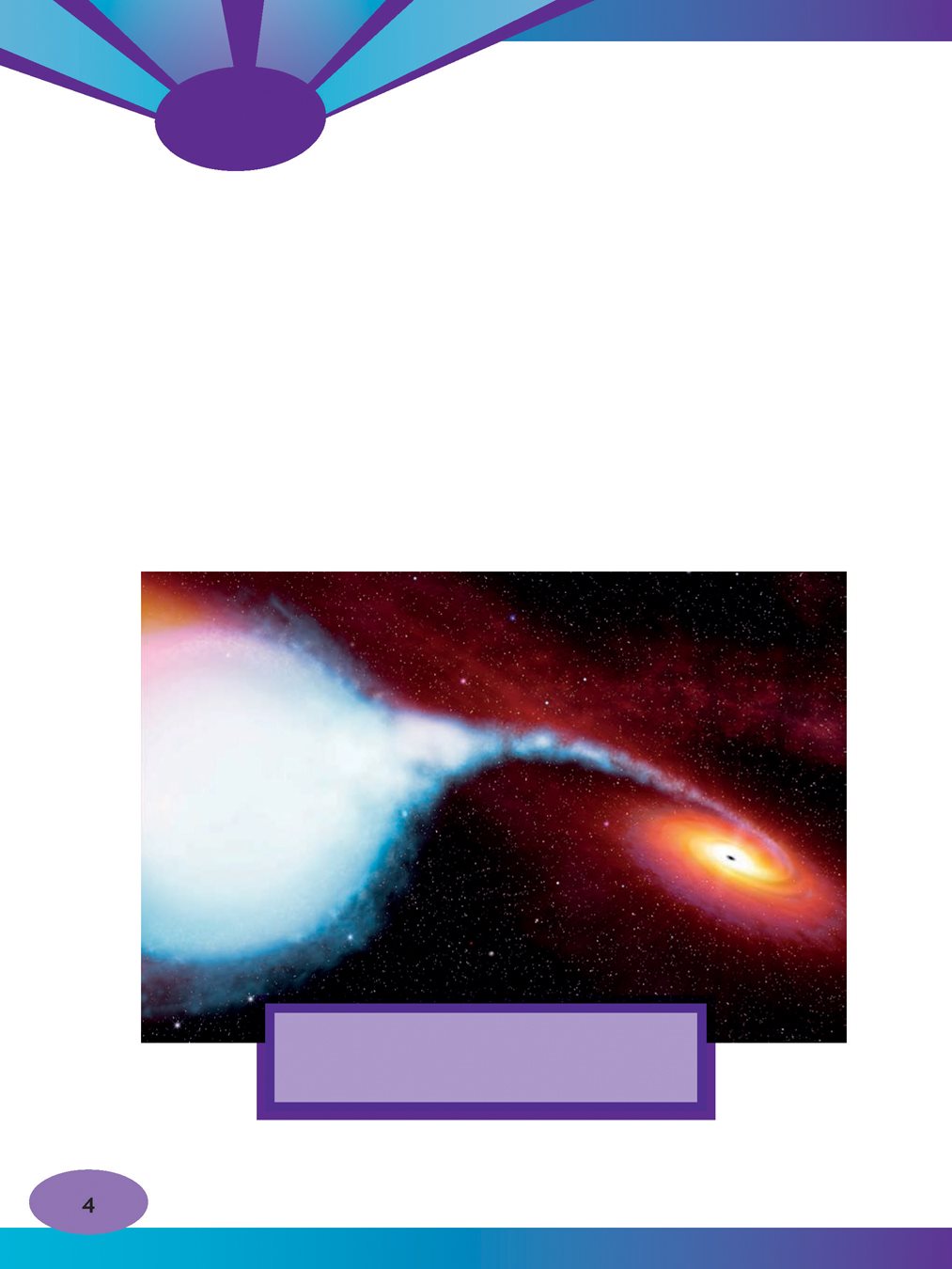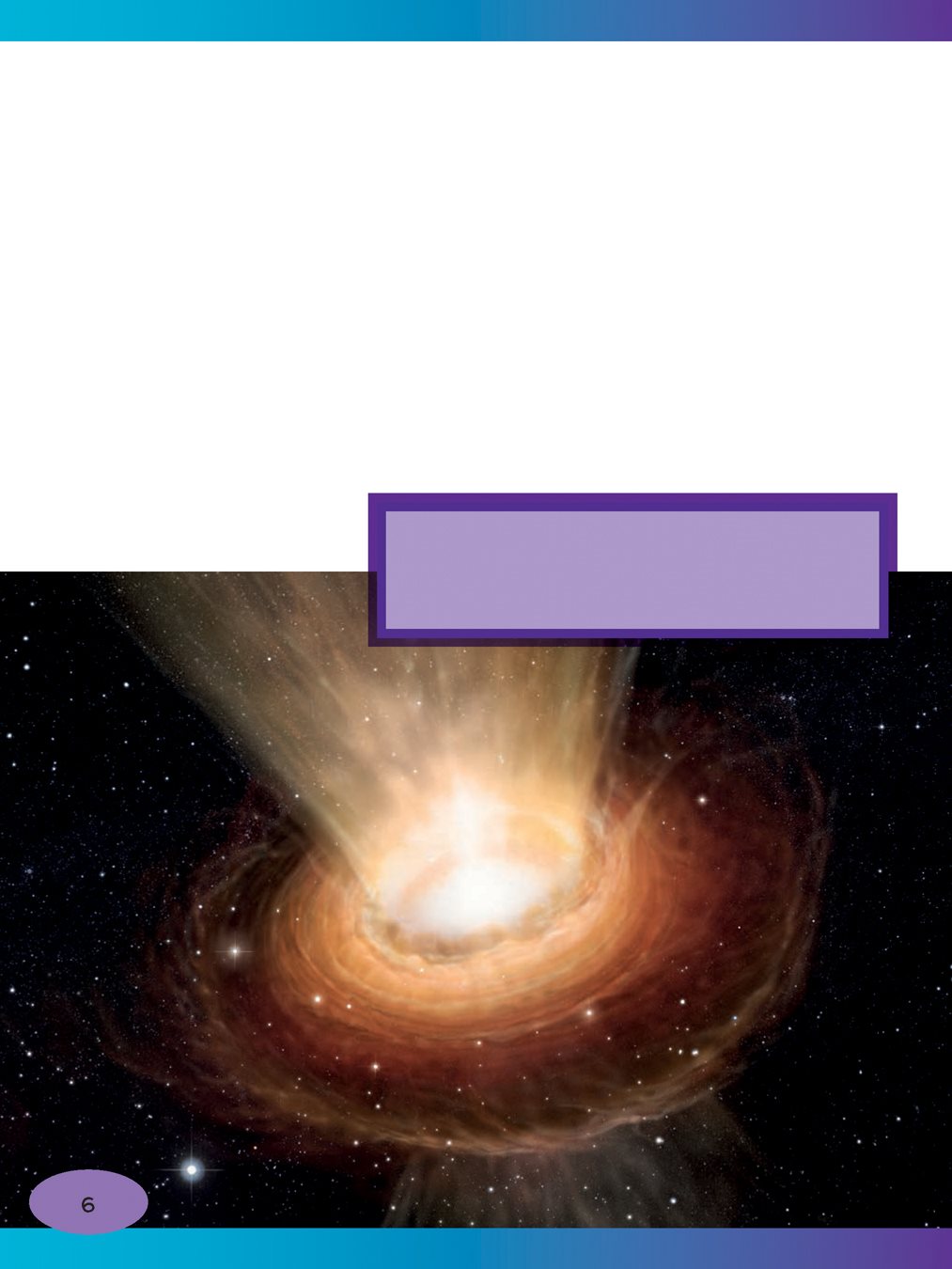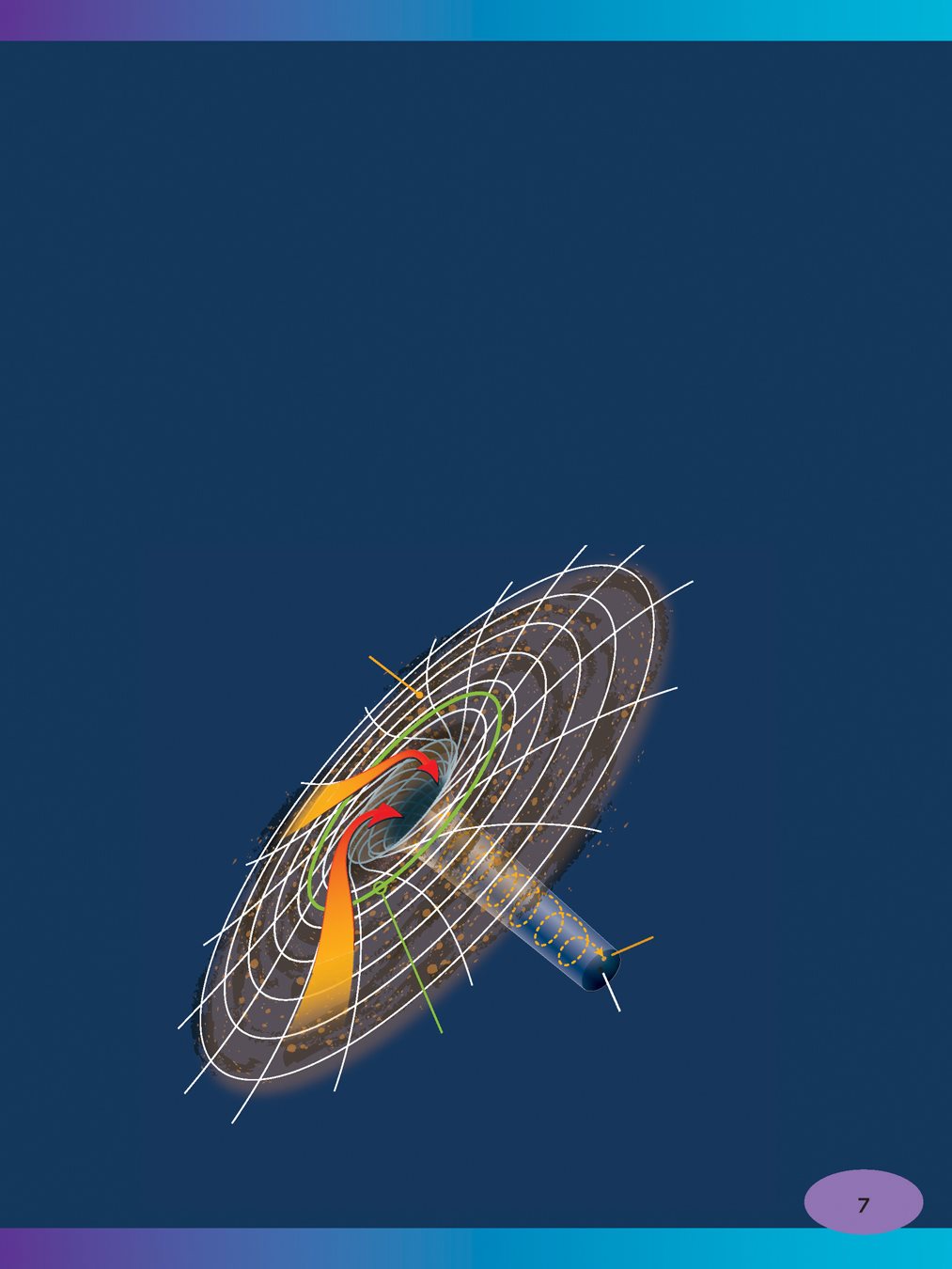Adrianna-Bold
Adrianna-BoldItalic
Adrianna-Demibold
Adrianna-DemiboldItalic
Adrianna-Italic
Adrianna-Regular
AdriannaCondensed-Bold
BillyInfant-Semibold
EatwellSkinny
FuturaStd-Heavy
MinionPro-Regular
Adrianna-Bold
Adrianna-BoldItalic
Adrianna-Demibold
Adrianna-DemiboldItalic
Adrianna-Italic
Adrianna-Regular
AdriannaCondensed-Bold
BillyInfant-Semibold
EatwellSkinny
FuturaStd-Heavy
MinionPro-Regular
Adrianna-Bold
Adrianna-BoldItalic
Adrianna-Demibold
Adrianna-DemiboldItalic
Adrianna-Italic
Adrianna-Regular
AdriannaCondensed-Bold
BillyInfant-Semibold
EatwellSkinny
FuturaStd-Heavy
MinionPro-Regular
New Frontiers of Space
Cutting- Edge
Kevin Kurtz
Lerner Publications Minneapolis
Adrianna-Bold
Adrianna-BoldItalic
Adrianna-Demibold
Adrianna-DemiboldItalic
Adrianna-Italic
Adrianna-Regular
AdriannaCondensed-Bold
BillyInfant-Semibold
EatwellSkinny
FuturaStd-Heavy
MinionPro-Regular
Copyright 2020 by Lerner Publishing Group, Inc.
All rights reserved. International copyright secured. No part of this book may be
reproduced, stored in a retrieval system, or transmitted in any form or by any means
electronic, mechanical, photocopying, recording, or otherwisewithout the prior written
permission of Lerner Publishing Group, Inc., except for the inclusion of brief quotations
in an acknowledged review.
Lerner Publications Company
An imprint of Lerner Publishing Group, Inc.
241 F i rst Avenue North
Minneapolis, MN 55401 USA
For reading levels and more information, look up this title
at www.lernerbooks.com.
Main body text set in Adrianna Regular.
Typeface provided by Chank.
Library of Congress Cataloging-in-Publication Data
The Cataloging-in-Publication Data for Cutting-Edge Black Holes Research is on f i le at
the Library of Congress.
ISBN 978-1-5415-5582-2 (lib. bdg.)
ISBN 978-1-5415-7483-0 (pbk.)
ISBN 978-1-5415-5672-0 (eb pdf)
Manufactured in the United States of America
1-46037-43360-4/9/2019
Adrianna-Bold
Adrianna-BoldItalic
Adrianna-Demibold
Adrianna-DemiboldItalic
Adrianna-Italic
Adrianna-Regular
AdriannaCondensed-Bold
BillyInfant-Semibold
EatwellSkinny
FuturaStd-Heavy
MinionPro-Regular
Contents
Adrianna-Bold
Adrianna-BoldItalic
Adrianna-Demibold
Adrianna-DemiboldItalic
Adrianna-Italic
Adrianna-Regular
AdriannaCondensed-Bold
BillyInfant-Semibold
EatwellSkinny
FuturaStd-Heavy
MinionPro-Regular
Chapter
INTO A BLACK HOLE
Deep in the Milky Way galaxy, a star is being destroyed.
The gases that make up the star are being ripped from
its surface. The stream of gases swirls around, like water
going down a drain. Then it vanishes.
A black hole rips gas from the
surface of a star.
Adrianna-Bold
Adrianna-BoldItalic
Adrianna-Demibold
Adrianna-DemiboldItalic
Adrianna-Italic
Adrianna-Regular
AdriannaCondensed-Bold
BillyInfant-Semibold
EatwellSkinny
FuturaStd-Heavy
MinionPro-Regular
A black hole is destroying the star. A black hole is an
object with so much gravity that nothing can escape
from it not even light. Because black holes trap light, we
cant see them with optical telescopes. But astronomers
use other tools
to observe black
holes. They can
even see black
holes eating stars.
As astronomers
study black holes,
they are learning
amazing things.
Black holes are invisible,
so even the biggest optical
telescopes cant see them.
Adrianna-Bold
Adrianna-BoldItalic
Adrianna-Demibold
Adrianna-DemiboldItalic
Adrianna-Italic
Adrianna-Regular
AdriannaCondensed-Bold
BillyInfant-Semibold
EatwellSkinny
FuturaStd-Heavy
MinionPro-Regular
A Look Inside
Black holes are the most massive objects in the universe.
A massive object has a lot of stuff in it. The more
massive an object is, the more it weighs. Massive doesnt
always mean big though. Many black holes are small. If
Earth became a black hole, all the material that makes up
our planet would be packed into a space smaller than a
marble. But it would still weigh just as much.
Gases and other material swirl around
a supermassive black hole at the
center of a distant galaxy.
Adrianna-Bold
Adrianna-BoldItalic
Adrianna-Demibold
Adrianna-DemiboldItalic
Adrianna-Italic
Adrianna-Regular
AdriannaCondensed-Bold
BillyInfant-Semibold
EatwellSkinny
FuturaStd-Heavy
MinionPro-Regular
Astronomers think that black holes have two parts.
The event horizon is the outer edge of a black hole.
Nothing inside the event horizon can escape the black
hole. Even light cannot escape.
The second part of a black hole is the singularity. In
the singularity, all the matter in the black hole is packed
into a tiny point. It is smaller than an atom. A singularity
contains so much stuff that it does not follow the
normal rules of the universe. Scientists think that time
and space do not exist there.
PARTS OF A BLACK HOLE
rotating disc of dust,
gas, and stars
strong
gravitational
pull near event
horizon
weaker
gravitational
pull
event
horizon
particle
disappearing
into the black

